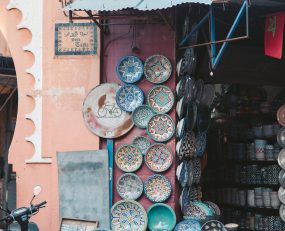
During the COVID pandemic, Moroccan e-commerce saw large growth. According to Interbank Electronic Banking Centre, in 2020, e-commerce sites in Morocco rose 46% in transaction volume and 25% in the amount of money spent compared to the same period in 2019. e-commerce within Morocco continued to climb in 2021, with a growth of 48% in the number of transactions, and 30% in the amount of money spent from 2020.
A boost in internet penetration coinciding with the COVID pandemic within Morocco could be a major cause for the growth in e-commerce activities within the country. According to the International Telecommunication Union (ITU), Moroccans using the internet expanded from 58.2% in 2016 to 84.1% in 2020. During this rise in internet penetration in the pandemic, data from Quartz Africa found that e-commerce Moroccan based websites enlarged by 300, reaching a total of 1000 e-commerce sites within Morocco.
Morocco’s port Tanger Med Port has also seen large growth recently, which Jordi Espin, Policy Officer at the European Shippers’ Council explains as due to “a significant increase in the demand for products from Asia, linked to e-commerce, has led to the deployment of large carriers that need modern infrastructure such as Tanger Med”. The port’s growth has seen the port handle 65m tonnes of goods in 2019, jump to 75m tonnes in 2020, and 101m tonnes in 2021. With around 40 African ports connected through Tanger Med, Morocco has a great access point to the African region.
Similarly, Morocco boasts a strong road network, with The Global Economy analysis finding that Morocco is fifth on the global ranking of quality road networks within Africa. Strong road networks are vital for e-commerce, as a quality road network allows for faster delivery times and faster movement of goods from within the country, also allowing for access to smaller villages throughout the country. With strong port access and a good road network, Morocco has good e-commerce logistics capabilities which can be used to facilitate its growth within the market.
An example of a company making use of Morocco’s infrastructure is Jumia, with Jumia Morocco holding over 10,000 sellers offering more than 8m products. Jumia has a large Moroccan network, including over 500 consumer pick-up stations, a seller drop-off network, warehouses, and hubs, whilst also using over 45 logistics partners. With Morocco’s Tanger Med Port connecting to around 40 African ports, Jumia can make use of Morocco’s potential for e-commerce growth within the African region, combined with the already established Jumia warehouse network of over 3,000 warehouses across the continent.
However, Morocco has some roadblocks blocking its e-commerce segment from reaching its full potential. For example, digital payments aren’t a common practice within Morocco, with The World Bank reporting that only 17% of Moroccans aged above 15 use digital payment, and only 1.6% of the population buy products and services online. These figures show how low e-commerce penetration remains in Morocco, with the potential for large growth if a higher percentage of the population can be tapped.
In response to the lack of digital payment infrastructure within Morocco, Visa announced its partnership in February 2022 with digital payments manager Interbank Monetary Center (CMI), establishing a B2B digital payment system, to improve access to cash flow between businesses. Businesses within Morocco will be given access to solutions, such as PayByMail and Android smart terminals. This access will be given to businesses of all sizes.
Another example of attempts to increase digital purchasing options within Morocco comes from Moroccan start-up Chari, which is a B2B e-commerce and fintech app for traditional retailers in French-speaking Africa. It has around 15,000 convenience store customers and offers consumer goods to be delivered in less than 24-hours. In January 2022, Chari received a $100m valuation after announcing its intentions to pilot a ‘Buy now, pay later’ (BNPL) solution through its acquisition of Karny, offering its BNPL service to shop owners. More recently in March 2022, Chari then acquired Axa Credit, the credit branch of Axa Assurance Maroc, for $22m. This acquisition will help customers get loans for larger purchases, where before this wasn’t available as, according to Statista, 71% of Moroccans in 2021 didn’t have access to the services of banks or similar organisations, making them unable to get loans.
Similarly, Jumia makes use of its own payment system through JumiaPay, which allows its customers to use credit cards to make payments through Jumia and can also be used for payments to other services, such as paying for Amazon products. These examples show how Morocco is building up its digital payment infrastructure, however, with still more to be done to reach a larger percentage of the Moroccan population, with most e-commerce sellers still using cash-on-delivery.
However, digital payments aren’t the only hurdle for e-commerce growth within Morocco. Before the pandemic there had been a history of trust issues with e-commerce consumption within the Moroccan population, with Fatiha Idhammou, a consultant at e-commerce agency, Energiedin stating “before that time, a lot of people used to think doing business online is too risky and not advisable”. With only 1.6% of the population buying products and services online, that trust still needs to be gained for large parts of the population to move away from brick-and-mortar stores. Currently, e-commerce accounts for just 2% of Morocco’s retail sector, according to businessfrance.
Source: Transport Intelligence, May 3, 2022
Author: Michael Sinclair